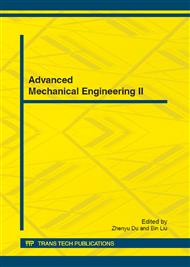p.132
p.139
p.144
p.149
p.154
p.159
p.164
p.169
p.174
Analysis of New Type Repulsion Mechanism Performance
Abstract:
Using circuit method to analysis equations of circuit and motion of coil-coil Mechanism, numerical simulations were also made. Simple method of experimental verification was proposed. The numerical results show influence of circuit parameter and benefits of multiple series gaps.
Info:
Periodical:
Pages:
154-158
Citation:
Online since:
July 2012
Authors:
Price:
Сopyright:
© 2012 Trans Tech Publications Ltd. All Rights Reserved
Share:
Citation:


